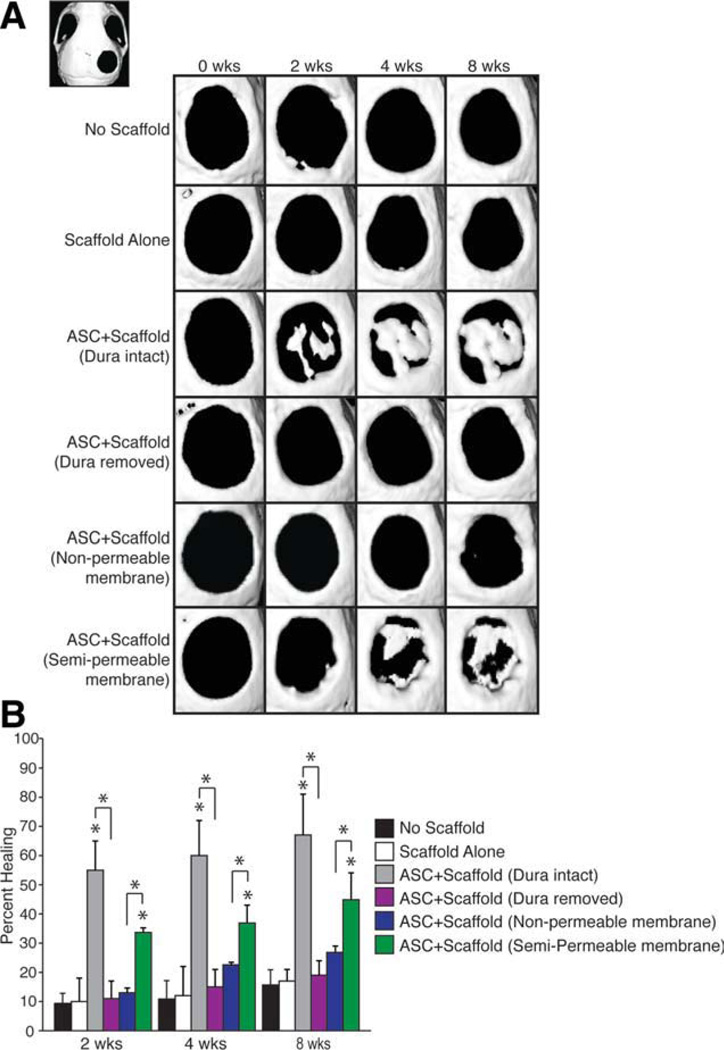Figure 1.
Dura mater (DM) is required for human adipose-derived stromal cells (ASCs) to heal mouse calvarial defects. (A): Representative micro-X-ray computed tomography (micro-CT) images of defect sites at stratified time points postoperatively. The CT image in the upper left corner demonstrates the entire skull with the defect in the right parietal bone. Defects were either left empty, or treated with (a) no scaffold, (b) scaffold alone, (c) an hASC-engrafted scaffold with intact DM, (d) an hASC-engrafted scaffold with DM removed, (e) an hASC-engrafted scaffold with an impermeable silicone membrane placed between the scaffold and intact, underlying DM, or (f) an hASC-engrafted scaffold with a semipermeable membrane placed between the scaffold and intact, underlying DM (n = 5 per group). (B): At 8 weeks, healing was quantified using Adobe Photoshop, expressed as average fraction osseous healing of the original defect size. A one-factor analysis of variance was used to compare the different treatment groups, followed by post hoc paired Student’s t tests (with a Bonferroni correction) to assess significance. Asterisks placed directly over bars show significance when compared with control group (scaffold alone). Asterisks placed over bracket show significance between the groups indicated; *, p < .05. Abbreviation: ASC, adipose-derived stromal cell.

